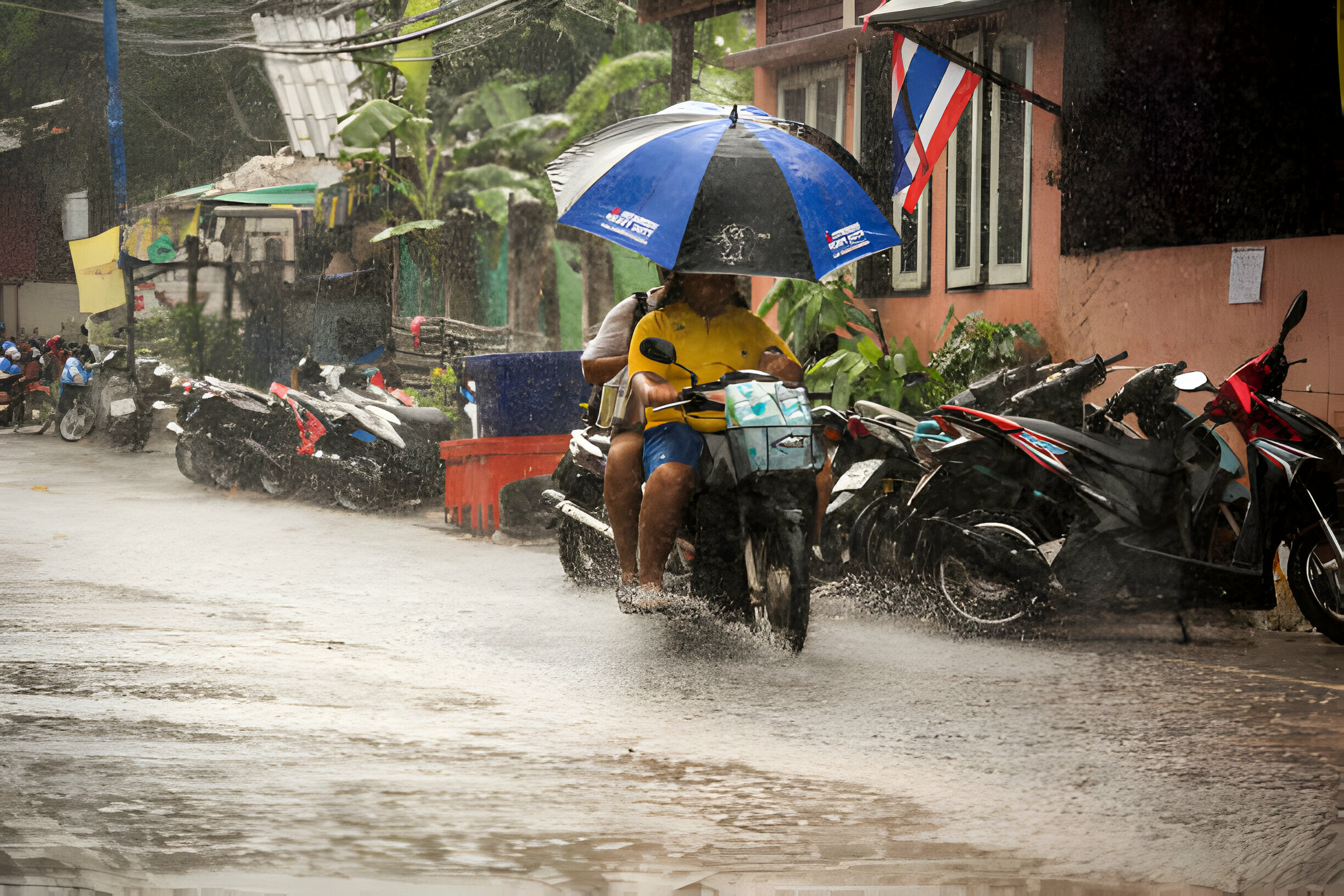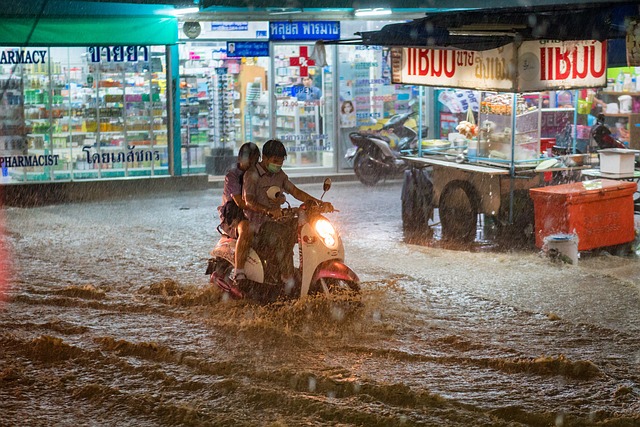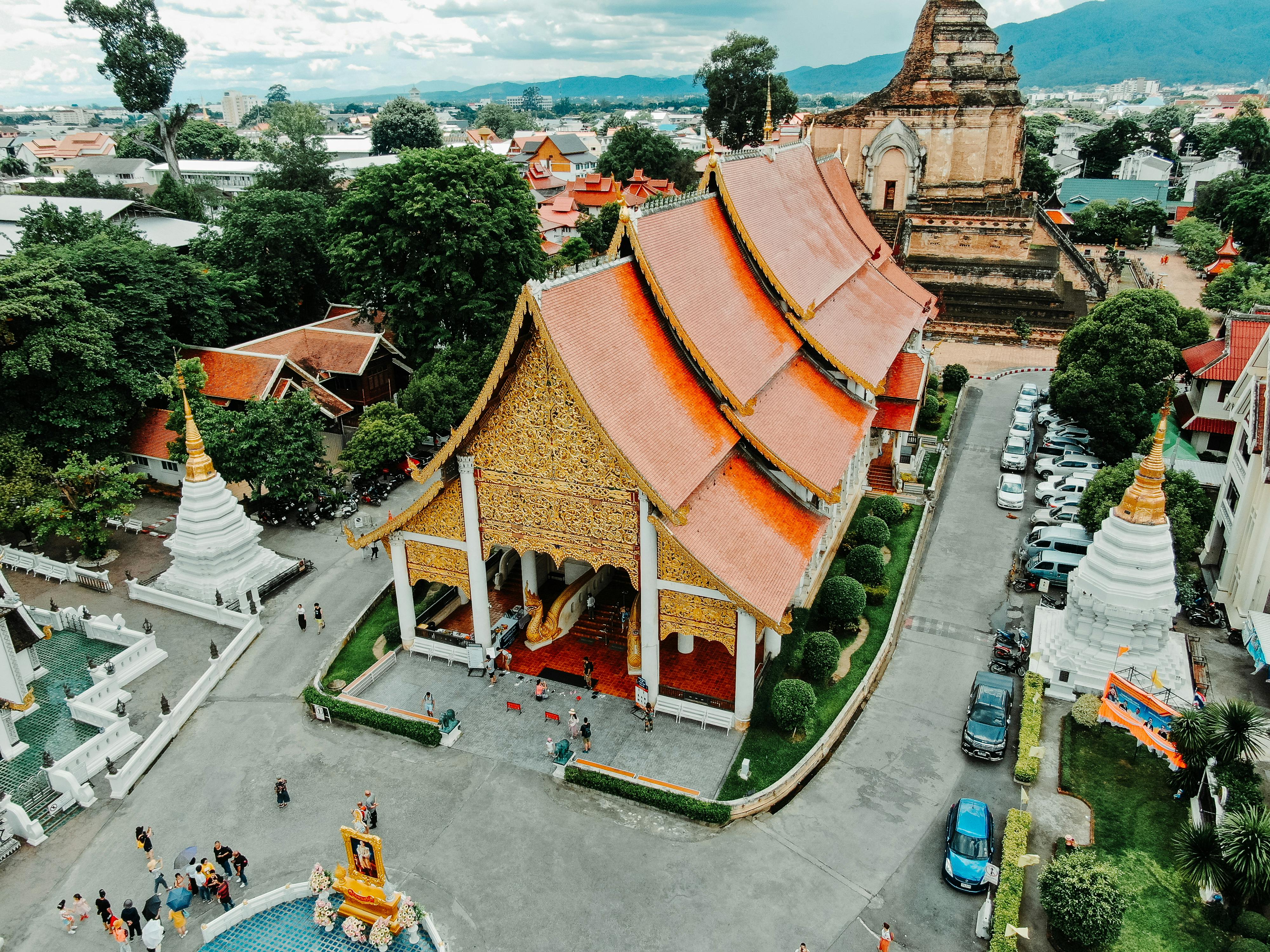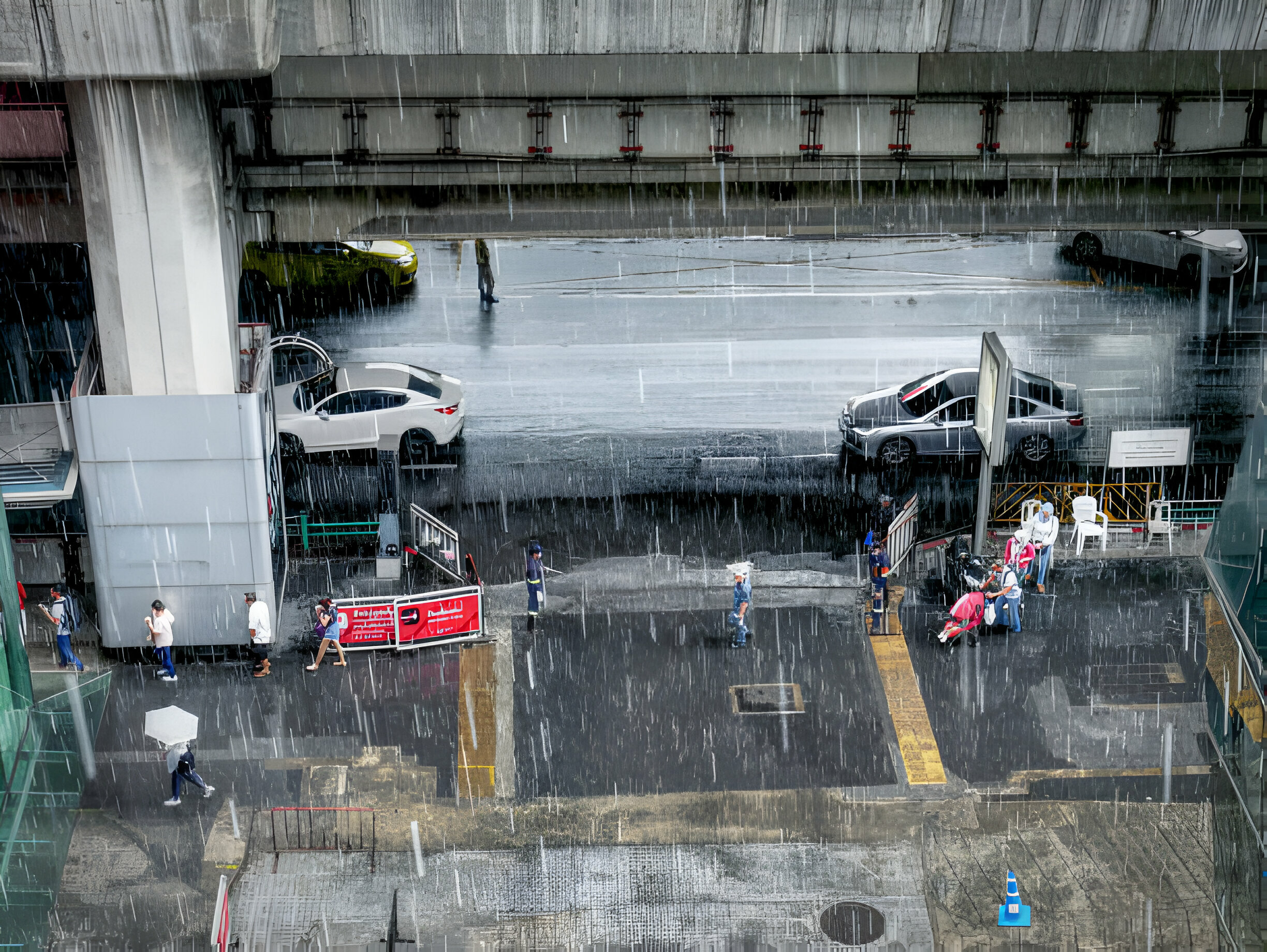Thailand in the rain? It might not be your first idea—but it could be your favorite surprise. Forget everything you’ve heard about monsoons ruining vacations. The Thailand rainy season transforms the country into a lush, vibrant wonder. During this season, the country comes alive in vibrant greens, the crowds thin out, and the atmosphere slows down. In this guide, we’ll walk you through how to turn stormy skies into unforgettable memories.
Key Takeaways
- The Thailand rainy season typically runs from June to October, but varies by region.
- It brings lush greenery, lower travel costs, and fewer crowds—but also high humidity and sudden showers.
- Some islands like Koh Samui and the Gulf of Thailand remain relatively dry, offering a beach-friendly alternative.
- Plenty of activities remain possible: jungle treks, spa retreats, cultural visits, and more.
- Pack light, breathable clothes, a compact raincoat, waterproof shoes, and mosquito repellent.
When Is the Rainy Season in Thailand?

Thailand’s wet season usually begins in June and winds down by October—but don’t expect a rigid calendar. Depending on the region, the skies might open earlier or linger a little longer. It’s the southwest monsoon that drives this seasonal rhythm, bringing with it not just rain, but life to the forests and rice fields.
Along the Andaman Sea—think Phuket, Krabi, and similar favorites—you’ll likely encounter heavier showers. The Gulf of Thailand, on the other hand, including islands like Koh Samui, tends to stay dry a bit longer into the year. As for Bangkok, a quick afternoon downpour is the norm, not the exception—and it often passes as fast as it came.
Regional Breakdown of the Monsoon
If you’re comparing Thailand weather by region, you’ll notice stark differences between the coasts and the north.
Northern Thailand
In Chiang Mai and its mountainous surroundings, rainfall tends to be gentler and often arrives in brief, soothing bursts. This seasonal moisture breathes life into the hills, creating an ideal backdrop for forest hikes or serene visits to hilltop temples. Mornings and mid-days are usually dry, offering perfect windows to explore.
Central Thailand
The central region, including Bangkok and Kanchanaburi, sees frequent rain, especially in September and October. However, rainfall tends to be brief and predictable, allowing travelers to plan around it. Expect warm temperatures and tropical air all day long.
Southern Thailand
Southern Thailand experiences two monsoons. The Andaman coast (Phuket, Krabi, Koh Lanta) gets more rain from May to October, while the Gulf coast (Koh Samui area) is wetter from October to December. Be cautious during this period, as typhoons can occasionally disrupt boat services and beach access.
Climate Change and Unpredictable Rainfall
In recent years, climate change has made Thailand’s rainy season increasingly erratic. Sudden drought-like gaps and violent downpours are now more common, even in areas once considered stable. For safety, always consult weather advisories—especially when heading into mountainous terrain or coastal routes vulnerable to flooding. Need real-time weather alerts? You can check forecasts directly on the official Thai weather website before heading out.
The rainy season can also bring unexpected events. For real-time updates, it’s wise to check the latest news and environmental alerts.
What to Pack for the Thailand Rainy Season

- Your rainy season essentials should include airy outfits made from natural fibers like cotton or linen.
- Add a foldable raincoat, grippy waterproof shoes, and a waterproof pouch for your phone or passport.
- Don’t forget mosquito repellent and high-SPF sunscreen—UV rays sneak through even under grey skies.
Things to Do During the Rainy Season
Rain doesn’t mean boredom in Thailand—quite the opposite. This time of year makes waterfalls roar, rice fields glow, and mountain fog dance. Here’s how to enjoy it all, rain or shine.
Need even more inspiration? Discover what to do in Thailand when it rains — 15+ practical and fun ideas for every type of traveler.
Chiang Mai

- Hike through mist-covered trails in Doi Inthanon or discover serene temples surrounded by fog in Doi Suthep.
- Shelter from the drizzle with a cup of herbal tea after a traditional massage in the Old Town.
- Sign up for a yoga session or mindfulness retreat—rainfall makes the perfect soundtrack for reflection.
Bangkok

Rainy days are also perfect for enjoying Thai cuisine from the comfort of your accommodation. If you’re unsure how to do it, check out our guide on how to order food in Thailand.
- Visit world-class shopping malls (Siam Paragon, IconSiam) to escape the showers.
- Explore Bangkok’s museum scene: MOCA, Jim Thompson House, or the Bangkok Art and Culture Centre.
- Take a boat ride along the canals—quieter, cooler, and often more atmospheric in the rain.
Want a more local way to get around in wet weather? Discover whether tuk-tuks in Thailand are a good idea during the rainy season — plus tips to ride them smartly and safely.
Rainy Season Festivals You Shouldn’t Miss
Thailand’s monsoon season isn’t just about the weather—it’s also rich in culture. One of the highlights is the Candle Festival in Ubon Ratchathani (held in July), where intricately carved wax sculptures parade through the streets in a celebration of Buddhist Lent.
Another spectacular monsoon-related celebration is the Bun Bang Fai Rocket Festival, where villagers launch handmade rockets to encourage rainfall and mark the start of the wet season.
Pros and Cons of Traveling During the Rainy Season
| Advantages | Disadvantages |
|---|---|
| Lower accommodation prices and fewer crowds. | Rain can disrupt outdoor plans and transportation. |
| Lush, vibrant landscapes and cooler temperatures after rain. | Higher risk of flooding in some provinces and mountain roads. |
| Authentic local experiences with fewer tourists around. | Occasional beach closures or dangerous sea conditions during typhoons. |
When Is the Best Time to Visit Thailand?
The best time to visit Thailand depends on your travel goals. Here’s a seasonal breakdown:
Dry Season (November–March)
This is the most popular time to visit, especially for beachgoers and outdoor lovers. The weather is sunny, humidity is low, and skies are blue across most of the country.
Hot Season (April–May)
Expect high temperatures (up to 40°C) and intense sun. Songkran, the Thai New Year, takes place in mid-April and includes nationwide water fights—an ideal way to beat the heat!
Rainy Season (June–October)
If you’re seeking adventure, green landscapes, and lower prices, this could be the season for you. Just stay flexible and pack accordingly!
Conclusion
Traveling during Thailand’s rainy season offers more than just a different kind of weather—it offers a different kind of experience. From verdant mountains and misty mornings to cultural events and budget-friendly travel, the monsoon can be a gift in disguise. Come prepared, keep an open mind, and you may just find yourself falling in love with the Thailand rainy season—an experience unlike any other.
Before packing your bags, don’t forget to read our guide on the Thai Digital Arrival Card—a must for a smooth entry into the Kingdom.
🔄 Last updated on June 25, 2025
